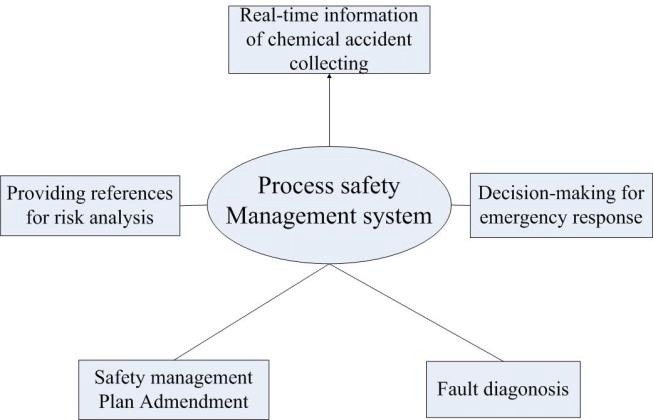Process Safety Management (PSM) is a crucial aspect of managing highly hazardous chemicals and ensuring safe operations in industries such as oil and gas, chemical manufacturing, and pharmaceuticals. PSM aims to prevent releases of substances that could cause catastrophic incidents, including fires, explosions, and toxic exposures. However, despite the implementation of PSM programs, many companies face challenges in fully executing their strategies. Avoiding common pitfalls is essential to ensuring that PSM serves its intended purpose: protecting people, property, and the environment.
At The Safety Master, we have seen firsthand the key areas where businesses falter in their process safety management. Based on our experience, this article explores the top five common pitfalls and provides actionable strategies for avoiding them.
1. Inadequate Process Hazard Analysis (PHA)
One of the foundational elements of PSM is conducting a thorough Process Hazard Analysis (PHA). However, many organizations either conduct superficial analyses or fail to revisit and update their assessments periodically. This leads to a false sense of security while leaving unidentified risks in the system.
How to Avoid It:
Ensure that PHAs are comprehensive, involving interdisciplinary teams that understand the intricacies of your operations. PHAs should not be one-off activities. At The Safety Master, we recommend revalidating your PHAs at least every five years or after significant process changes. Regular updates help account for evolving hazards, new technologies, or changes in personnel. Involving external safety consultants can also provide fresh perspectives and expertise.
2. Insufficient Employee Training and Engagement
Employee training is essential in PSM, yet organizations often treat it as a mere formality. Training sessions can become outdated, and there is a risk of training fatigue, where employees do not retain critical information. Worse still, many companies fail to foster an environment of safety engagement, where employees feel responsible for identifying and reporting hazards.
How to Avoid It:
Develop a robust and engaging training program that tailors content to different roles in your organization. At The Safety Master, we believe that hands-on, scenario-based training methods are highly effective in retaining employee attention and enhancing their ability to respond to emergencies. Also, create a culture where safety is part of everyday conversations, and encourage employees to voice concerns without fear of reprimand. This engagement can lead to early identification of hazards before they escalate into larger issues.
3. Poorly Managed Change Processes
Management of Change (MOC) is a key element of PSM, designed to ensure that any alterations to processes, equipment, or personnel are managed without introducing new hazards. One common pitfall is implementing changes without following proper protocols. This happens when organizations rush changes without fully assessing the risks or documenting them appropriately.
How to Avoid It:
Formalize the MOC process and ensure that all changes, no matter how small, go through a structured review. Each change should be thoroughly documented and evaluated for its impact on safety. This includes identifying how the change might affect existing safety controls. Engaging multidisciplinary teams, including engineers, operators, and safety professionals, will ensure a comprehensive understanding of potential risks. At The Safety Master, we recommend integrating MOC into your regular operations and ensuring that no change bypasses this critical review process.
4. Ineffective Mechanical Integrity Programs
Mechanical integrity is often overlooked, yet it is a critical component of PSM. Failures in mechanical systems, such as pressure vessels, pipelines, and valves, can lead to catastrophic incidents. In many cases, mechanical integrity programs are reactive rather than proactive, with equipment maintenance occurring only after an issue arises.
How to Avoid It:
Implement a proactive mechanical integrity program that prioritizes regular inspections, testing, and preventive maintenance. Focus on high-risk equipment and conduct inspections at appropriate intervals. Non-destructive testing methods can help identify potential issues before they lead to equipment failure. Ensure that your program is data-driven, relying on historical performance, manufacturer recommendations, and regulatory guidelines. At The Safety Master, we emphasize the importance of having skilled personnel who can accurately assess equipment condition and predict future issues based on current data.
5. Weak Emergency Planning and Response
Even with robust PSM programs in place, accidents can still occur. Unfortunately, many organizations do not have strong emergency response plans, or they fail to test them adequately. In some cases, emergency drills are infrequent, poorly organized, or disconnected from the actual risks associated with the operation.
How to Avoid It:
Develop a comprehensive emergency response plan that addresses all potential scenarios, including chemical releases, explosions, and fires. Regularly test your plan through realistic drills that involve both internal teams and external emergency responders. After each drill, conduct debriefs to identify weaknesses and make improvements. The Safety Master advocates for conducting both tabletop exercises and live drills to ensure that your team is fully prepared for any crisis. Additionally, ensure that emergency response plans are integrated with the community and local emergency services, as external coordination can be critical in large-scale incidents.
Conclusion: A Proactive Approach to Process Safety Management
Process Safety Management is not a static framework but a dynamic system that requires constant attention and improvement. By avoiding these common pitfalls, organizations can strengthen their PSM programs and significantly reduce the likelihood of catastrophic events.
At The Safety Master, we have extensive experience helping organizations build, refine, and sustain robust PSM programs. Our approach emphasizes proactive safety measures, comprehensive training, and continuous improvement. By addressing these five common pitfalls—PHA inadequacies, poor employee training, unmanaged changes, ineffective mechanical integrity, and weak emergency planning—your organization can stay ahead of potential hazards and ensure a safer working environment for everyone.
Investing in process safety is an investment in the future of your organization. As the saying goes, “An ounce of prevention is worth a pound of cure,” and nowhere is that truer than in process safety management. For assistance in optimizing your PSM strategies, contact The Safety Master today. Together, we can create safer, more resilient industrial operations.



